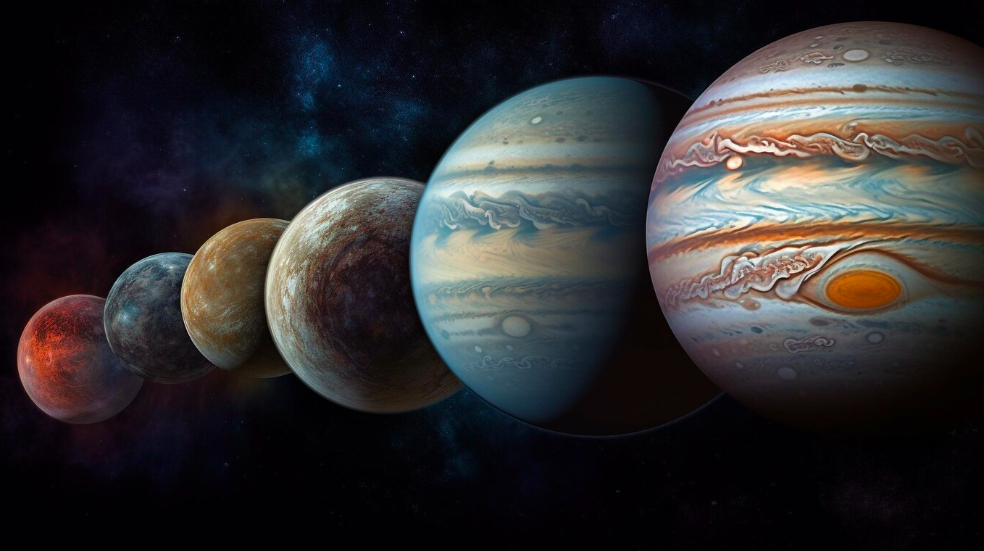The Life Cycle of Stars: From Stellar Nurseries to Stellar Death - Stellar Evolution Journey

In the vast expanse of the cosmos, stars are not just points of light but the very engines that power the universe. They are born, they live, and they eventually meet their demise in a majestic cosmic ballet. Join us on a journey through the "The Life Cycle of Stars: From Stellar Nurseries to Stellar Death" - stellar evolution journey, as we unveil the secrets of these celestial giants.
From Dust to Star: Stellar Birth
Nebulae: The Stellar Nurseries
Nebulae, vast clouds of gas and dust, are where stars begin their journey. Within these cosmic nurseries, gravitational forces start to gather matter, creating the foundation for what will become a star.
Protostars: The Embryonic Phase
As gravity continues to exert its influence, the protostar is born. This stage marks the birth of a new star, and it is characterized by intense heat and pressure building at its core.
Main Sequence: The Adult Star
Stars spend most of their lives in the main sequence phase, where they steadily burn hydrogen into helium. Our sun is a prime example of a star in this phase.
The Life Cycle of Stars: From Stellar Nurseries to Stellar Death
Red Giants: The Aging Stars
As a star ages, it swells into a red giant. During this phase, it fuses heavier elements, creating a dazzling display of colors and ultimately leading to its own transformation.
Supernova: The Celestial Explosion
The grand finale of massive stars is the supernova explosion. It releases an immense amount of energy and scatters elements into space, enriching the cosmos.
Black Holes and Neutron Stars: The Remnants
The remnants of a supernova can take two forms: neutron stars or black holes. Neutron stars are incredibly dense, while black holes have such intense gravity that nothing can escape them.
The Cycle Continues: Stellar Renewal
Star Formation: Rebirth in Nebulae
The elements scattered by supernovae return to nebulae, seeding them with the building blocks of new stars. This cyclical process ensures the universe's continuous renewal.
FAQs (Frequently Asked Questions)
How do stars form in nebulae?
Stars form in nebulae through gravitational collapse. As gas and dust come together due to gravity, the pressure and temperature rise, eventually leading to the birth of a star.
What happens during a supernova explosion?
A supernova is a colossal explosion that occurs when a massive star exhausts its nuclear fuel. It releases an enormous amount of energy, producing heavy elements and sometimes leaving behind a neutron star or a black hole.
Can a star be reborn after its death?
Yes, stars can be reborn. Elements ejected during a supernova return to nebulae, where they can form new stars. This cycle of birth and death continues throughout the universe.
How long does a star remain in the main sequence phase?
The duration of the main sequence phase varies depending on the star's mass. For our sun, this phase will last approximately 10 billion years.
What is the fate of a low-mass star like our sun?
Low-mass stars, like our sun, eventually become red giants, shedding their outer layers to form a planetary nebula. The core left behind becomes a white dwarf, slowly cooling over billions of years.
Can anything escape a black hole's gravity?
Nothing, not even light, can escape a black hole's gravity once it crosses its event horizon. Black holes are incredibly dense and have an immensely powerful gravitational pull.
Conclusion
"The Life Cycle of Stars: From Stellar Nurseries to Stellar Death" - stellar evolution journey is a testament to the magnificent processes that shape our universe. From the birth of stars in nebulae to their spectacular deaths as supernovae and the eventual renewal of the cosmos, it's a cycle that continues to awe and inspire us. As we gaze at the night sky, let us remember that each star has its own unique story, and together, they paint the canvas of the cosmos.


